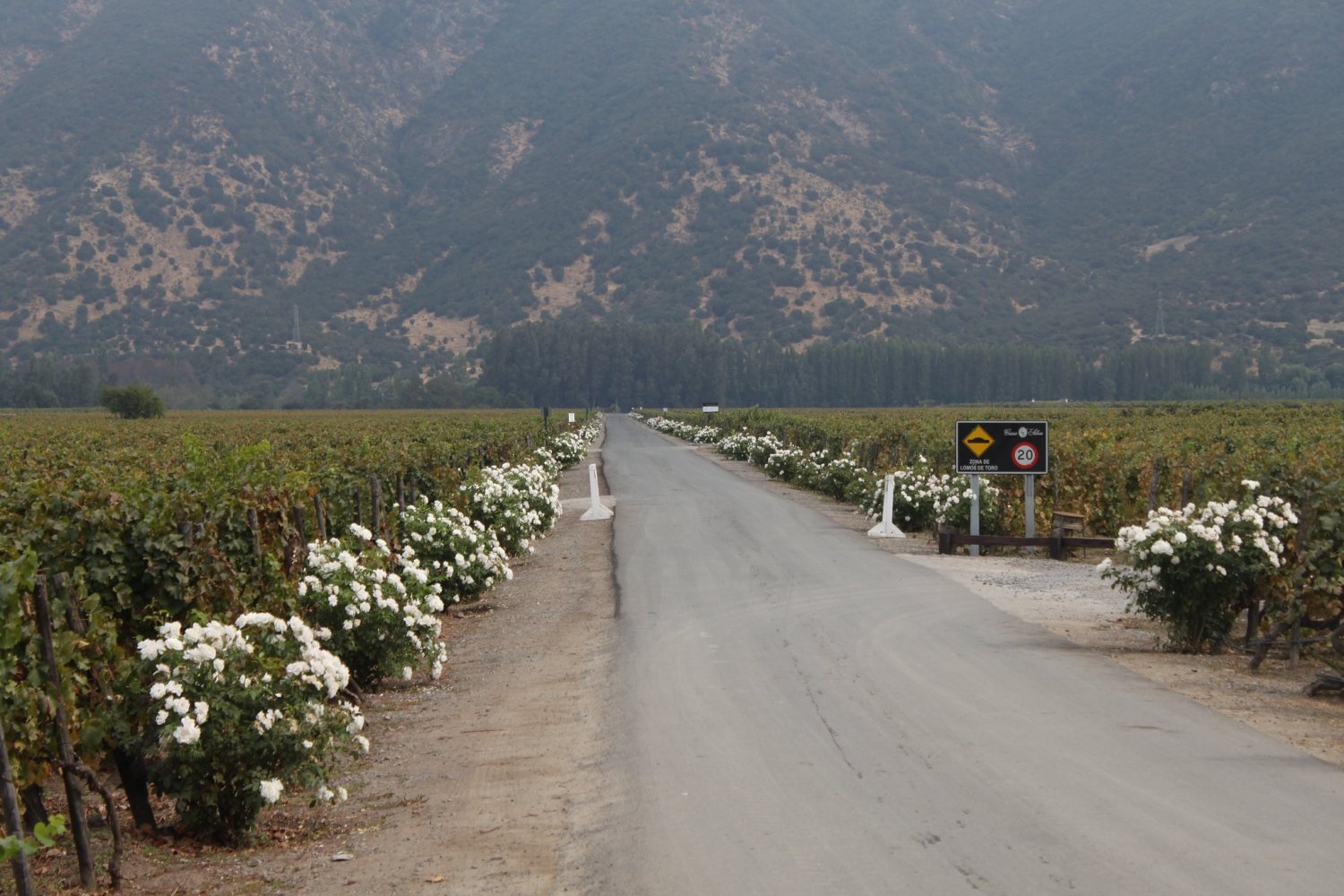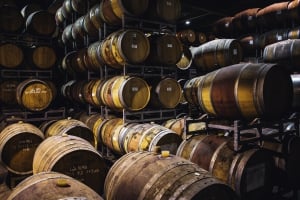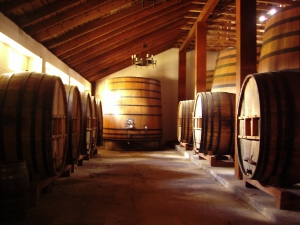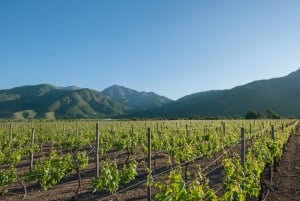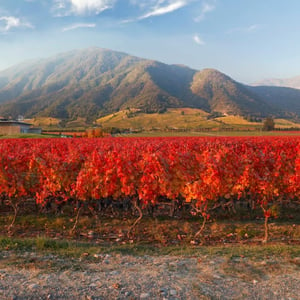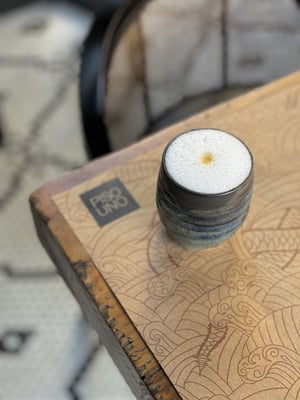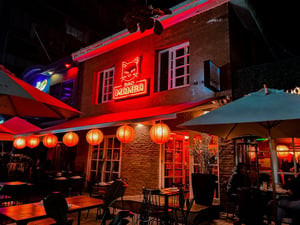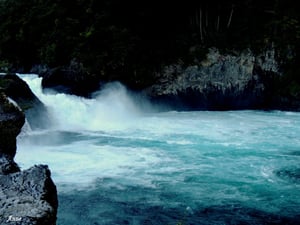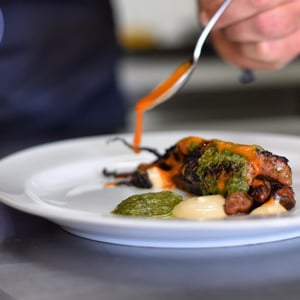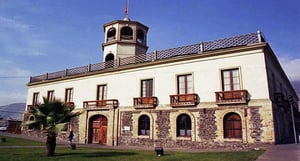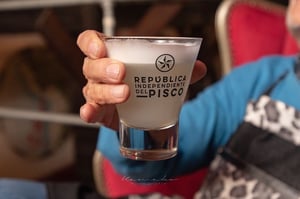Wine Tasting & Cellar in Chile
From the Atacama Desert to the humid forests of the north.
Book Top Experiences and Tours in Chile:
If youʻre booking your trip to Chile last minute, we have you covered. Below are some of the top tours and experiences!- Santiago: 1-Day Hop-On Hop-Off Bus and Cable Car Ticket
- Ushuaia: Penguin Watching Tour by Catamaran
- San Pedro Atacama: Baltinache Lagoons
- Santiago: Cajon del Maipo/Embalse del Yeso Tour with Picnic
- Marqués de Casa Concha: Wine Tasting at Concha y Toro
Taking advantage of the particular climatic conditions and the fertility of the soil that the wine valleys of the country present, Chile has been favored with a production of quality wines worthy of export. This strengthened the image of the country as a supplier of agricultural products, paving the way for a wide range of products in this area.
Within the following vineyards you will find a variety of strains to taste the best that Chile has to offer; Viña Concha y Toro, Viña Errázuriz, Viña Casa Silva, Viña Tres Palacios, Viña Tamaya, Viña Tabalí and many more.
- Sauvignon blanc
This white wine grape grows mostly in Chile's north and east of Santiago, in clay soils with sunny north slopes. It has scents of hay and gooseberry, as well as a strong acidity. Warm-climate strains are good for barrel aging.
- Chardonnay
Calcareous soils and a somewhat warm temperature are ideal growing conditions for this variety. The Casablanca Valley in Chile provides optimal growing conditions for this strain. Among its characteristics are its neutral fragrance, which can range from somewhat melon to exotic, and its good acidity.
- Riesling
Riesling is mostly cultivated in Chile's harshest valleys south of Santiago: Rapel, Curicó, and Maule. In recent years, Riesling has attracted the attention of forward-thinking winemakers eager to try new things. In any case, due to Chile's bright and hot climate, this strain plays a relatively insignificant role. Riesling has greenish to golden hues and a delicate, fresh, occasionally mineral taste. Its scent is dominated by citrus notes such as grapefruit and lemon, as well as apple and passion fruit. Riesling also conveys the terroir, or character, of the region where it grows particularly well.
- Cabernet Sauvignon
It has been grown for around 150 years and grows on vines with genuine roots. The mild temperature, low production, and fully matured grapes provide the ideal raw material for winemakers. This variety produces fruity, intense wines with a high tannin content. The fragrance of these wines is dominated by black currant, while the Chilean strains have a distinct eucalyptus scent.
- Merlot
It is referred to as the Cabernet strain's "little sister." It is the second most important noble variety in Chile. If the vines are highly prolific, they are relatively basic table wines. Merlot, on the whole, has a softer flavor and a less angular scent than Cabernet Sauvignon.
- Carménère
The carménère strain is the registered trademark of Chilean wines. In 1994, a French winemaker found legitimate examples of this strain in Chile, which had previously been classified as merlot. Carménère has been produced at a high level in the vineyards south of Santiago since then. It has a strong red hue and a berry fragrance; it is very delicious and powerful. Because the tannin content is lower than that of Cabernet Sauvignon, it is a light wine with a pleasant finish. It is suggested that you drink it when it is young.
- Syrah
Syrah is a high-quality wine strain that is not particularly productive. It was once thought to be a low-quality grape; nevertheless, it now belongs to the noble vines. The elaboration of Syrah is tough since the vines do not tolerate either a little or a lot of suns. When their grapes achieve perfect maturity, experts believe them to be among the greatest in the world. The southern hemisphere, with its more stable climate, provides superior growth conditions for this strain. Syrah wine has a dark hue and a high concentration of tannins, as well as a strong scent of red currant. A long maturation in the bottle is advised for its aging.
- Pinot noir
This thin-skinned grape, named for the cone shape in which it develops on the vine, is highly sensitive to temperature, soil type, pruning, and growing method, which is why it is regarded as the world's most "Capricious." For these reasons, even though the strain prefers the bright sun and shallow calcareous soils with high permeability, which are typical of Chile's central valley, little pinot noir is produced in Chile. Under ideal conditions, pinot noir creates wines that are harmonious, velvety, and smooth, with a wonderful fruity bouquet and a low tannin content.


